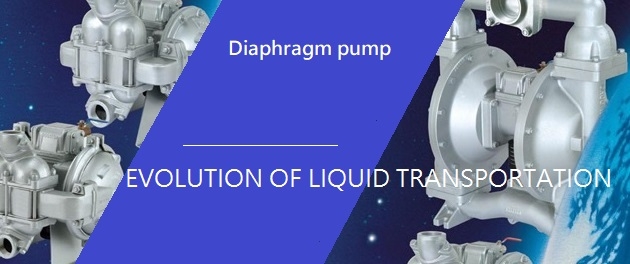Diaphragm pump
 |
| Pneumatic pumps do not require electricity, are safe and explosion-proof. With complete dimensions and specifications, our products have excellent fluid delivery performance and have been widely used in various industrial fields. |
☉ Applications
| 01. Glazing and clay transfer in ceramic plant. | 06. Paper pulp in papermaking. |
| 02. Jam, jelly, beverage transfer. | 07. Ink, paint, resin, pigment transfer. |
| 03. Adhesives, glue, solvent transfer. | 08. Heavy oill transfer. |
| 04. Waste water treatment. | 09. Raw material transfer in chemistry factory. |
| 05. Mud filter equipment. | 10. The field of variable pressure and flow. |
☉ Features
| 01. Explosion proof. | 11. Easy operation. |
| 02. No mechanical seals. | 12. Pumping low density dry powders. |
| 03. No rotating parts (or bearing). | 13. Shut down anytime without damage. |
| 04. No bypass piping required. | 14. Acts filter work in handling waste water. |
| 05. Can run dry continuously without damage. | 15. Operating without generate heat. |
| 06. Compact size, portable. | 16. Operating temperature up to 130℃. |
| 07. Variable speed and pressure. | 17. Ideal for shear sensitive materials. |
| 08. No efficiency loss by pressure or flow change. | 18. Handles non-abrasive but high corrosive fluid. |
| 09. Handles abrasive fluids. | 19. Dry, self-priming suction. |
| 10. Handles high viscosity fluids. |
☉ Properties of diaphragm material (reference only)
| Diaphragm material | Wetted body material | ||
| (working temp.) | Aluminum alloy | Stainless steel 316 | Polypropylene |
| Neoprene (0~80°C) | sea water, glaze material, amin, mineral, clay | waste water, lime | sulfuric acid (20%) |
| NBR (0~80°C) | lubricant oil, heavy oil | printing ink, resin | |
| EPDM (0~90°C) | trichloro methane | alchol, soybean oil, lactic acid | |
| Teflon (0~130°C) | toluene dichloro ethane, winter green oil | nitric acid, acetone | sodium lydroxidc, solution for electric plating |
| Viton (0~130°C) | asphalt | turpentine | |






